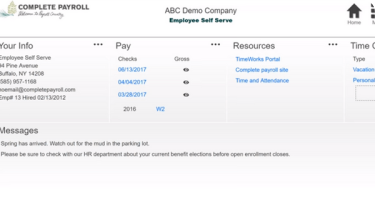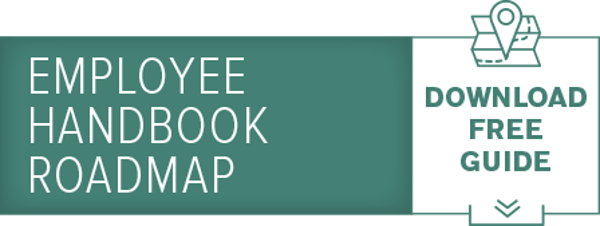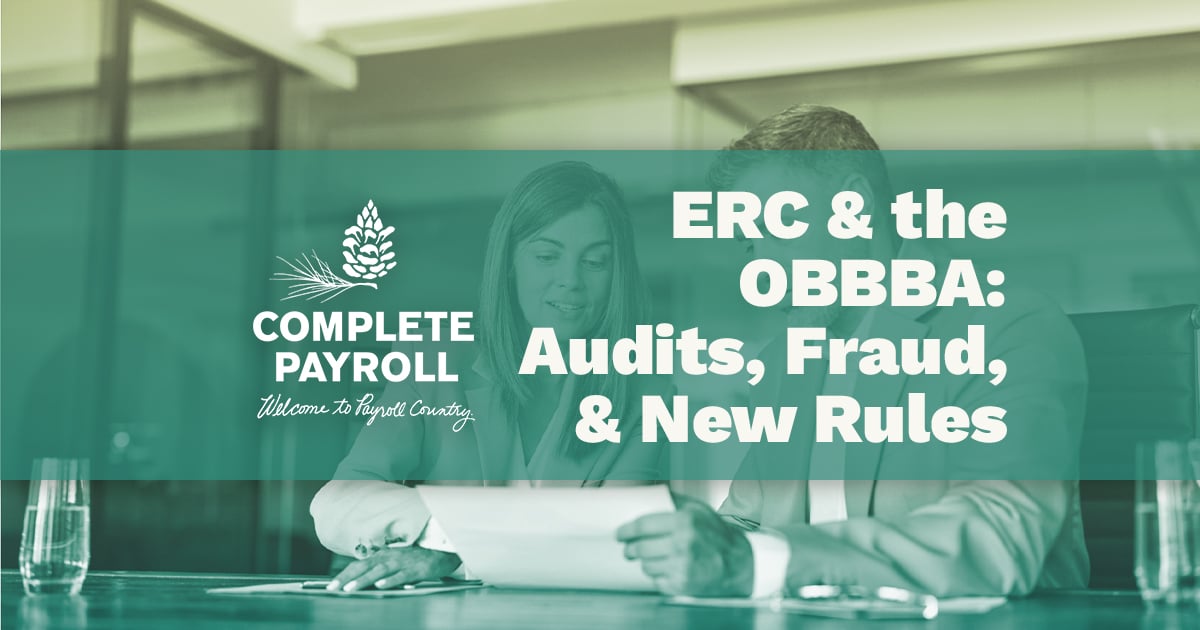Employee Handbooks
With this comprehensive employer resource, we explain how to craft a perfect employee handbook that can protect your company and its employees, while saving you valuable time and money.
Introduction
While not required by law, a comprehensive employee handbook is a very important tool that most HR experts agree every company should have. Done well, it can serve as a singular touchstone to which employees can easily refer for guidance, whenever necessary. Done poorly - or worse, not at all - and your company could be left vulnerable to a host of costly legal actions taken by current and former employees. Not to mention, disorder within your company’s ranks. This resource page will give you some important things to consider while you’re writing your company’s employee handbook.
What is an Employee Handbook?
An employee handbook clearly and concisely documents all of the rules, policies, and conditions that your company and its employees operate under. Though it is not a binding legal document, an up-to-date, compliant handbook is a viable first line of defense against huge litigation costs. The implementation of clear, concise policies that employees understand and managers apply consistently can assure employees that they are being treated fairly, and can reduce the number of claims filed against the employer. If an employee or former employee does file a claim, a handbook can provide valuable documentation to demonstrate that the employer had equitable and compliant workplace policies in place.
Additionally, your employee handbook is an ideal way to communicate with employees, whether it be about what is expected from them, what they can expect from their management and the company itself, or provide updates to company policies.
Why Your Company Needs an Employee Handbook
Introduce Employees to the Organization’s Culture, Mission, and Values
Your employee handbook is every new employees’ introduction to your organization’s culture and where they will fit within it. This helps to foster a sense of pride and belonging, which studies show will help employees become more productive in a shorter period of time. The introduction section of an Employee Handbook should answer questions like: “what do we do that sets us apart
Communicate to Employees What is Expected of Them
A well-written handbook provides employees with a clear understanding of their responsibilities. The handbook also serves as a compass for the organization’s policies and procedures. For instance, your handbook will advise employees what the procedures are for requesting time off. If an employee has to call in sick, the handbook advises them whom they should contact and what the timing should be. It also tells employees whom to go to if they have questions about any of the specific policies in the handbook. The handbook also communicates an employee’s general responsibilities regarding safety, timekeeping, reporting, and so on. By providing this clear, accessible information, handbooks ensure companies continue moving in the right direction.
Educate Employees About What They Can Expect From Management and Leadership
An employee handbook clarifies company objectives and leadership styles, as well as management best practices, to foster healthy professional relationships between managers and their reports. It also outlines logistics, such as timekeeping requirements, hours of work, pay periods, and so on. Further, a complete employee handbook advises employees of their various entitlements to federal and state leaves, such as FMLA or Jury Service Leave. These clearly communicated policies help to eliminate confusion and inconsistencies that result when handbooks are silent on these topics.
Communicate Key Company Policies, Clearly and Consistently
No policy is effective if it is practiced inconsistently. An employee handbook will accurately communicate your organization’s policies regarding employment, conduct and behavior, compensation, and other policies and procedures your organization follows. Most importantly, managers can refer to the handbook when answering questions or making decisions regarding their policies, and ensure their answers and actions are consistent with your policies and best practices.
Showcase Benefits
If your organization offers vacations, 401k, health insurance, paid parental leave, or other benefits to employees, make sure they know about these benefits and the eligibility requirements by communicating them in the handbook. A robust benefits package can help you retain your best and brightest employees, so be sure they know about your full suite of offerings by communicating these in the handbook.
Ensure Compliance with Federal and State Laws
No matter what state you do business in, or how many employees you have, you will be subject to state and federal employment laws. Your handbook not only communicates these various entitlements and obligations to
Defend Against Employee Claims
The unfortunate reality is that, as an employer, facing a lawsuit or similar challenge from a current or former employee is a matter of
Lets Employees Know Where to Turn for Help
Employees should feel comfortable approaching a trusted member of management for help when they want to report workplace violations, get workplace-related assistance, and get answers to any other questions they may have. The alternative is for them to turn to an outside third party, like the EEOC or Department of Labor, which could trigger a costly and time-consuming investigation. When a handbook not only outlines one or two management individuals for an employee to turn to in these
What to Include in Your Employee Handbook
Welcome Statement
Make a good first impression! Begin your handbook with a brief statement welcoming your new hire into the family.
Company Info
Give new employees a sense of your company’s history. Include any awards or other recognition. Here, you should also include your company’s mission and vision statements, which assert your company’s core values and ambitions. A well-crafted mission statement lays the foundation for how the company and its employees carry themselves, internally and externally.
Clearly stated purpose of the handbook
Briefly explain what your handbook is, as well as what it isn’t. For instance, this section would be a perfect place to explain that the handbook itself is a guide to understanding your company’s various policies, methods and processes, and not an employment contract. Also mention the fact that the policies contained within are subject to change.
Employment Information
To remain legally compliant, include statements regarding Equal Opportunity Employment (EEO), your state’s “Employment-At-Will” policy. Consider having an attorney draft these documents since it’s possible that even one error in verbiage could render your policy unenforceable.
Compensation and Benefits
Inform employees of your company’s pay frequency, paid time off policy, and any overtime or holiday pay policies. If employees are eligible for benefits upon completing their introductory period, a simple overview of those benefits will suffice. To avoid having to constantly update your handbook, save any specific details about benefits programs for supplemental materials that you can distribute when appropriate.
Sexual & Other Unlawful Harassment Policy
Creating a safe space for your employees to work should be of paramount importance to your organization. It should be made clear to all employees that harassment of any kind is expressly prohibited. Provide a number of channels through which employees can register harassment complaints, and be sure to outline the disciplinary consequences employees can expect to face if found in violation of your harassment policy.
Accommodations
The Americans with Disabilities Act (ADA) requires all companies to provide what they consider “reasonable accommodations” to accommodate workers with disabilities to do their jobs. Any such accommodations should be clearly stated in your handbook. Also, make sure to include any lactation accommodations your company makes for nursing mothers.
Employee Conduct
Here is where you can establish your company’s rules about drug and alcohol use, social media usage, etc. Be careful when drafting your company’s dress code, though. Banning facial hair and headwear outright may unintentionally offend employees who have religious or medical reasons for not shaving and/or wearing a headdress. Also, unless it is absolutely necessary to your business (and you can prove it), always refrain from requiring female employees to wear skirts, jewelry, or makeup.
Employee Sign Off/Acknowledgement
It is always a good idea to have each employee sign a document in which they acknowledge that they were provided with your employee handbook. Being able to produce this document when necessary will protect you in the event that an employee takes legal action, arguing that they were terminated or otherwise disciplined for violating a company policy they were unaware of.
Confidentiality
If your company handles highly sensitive customer data, it is important to convey to your employees their responsibilities when handling said data. Supplement this by having each employee sign a confidentiality waiver, but do not include the document itself in the employee handbook.
What to Avoid in Your Employee Handbook
Limiting Employees’ Rights to Discuss Wages
Policies that prevent employees from discussing their wages violate federal law. Section 7 (C)(d) of the National Labor Relations Act (NLRA) contains a provision that gives all employees – whether unionized or not – the right to discuss "wages, hours, and other terms and conditions of employment" with their fellow employees. The National Labor Relations Board (NLRB) has taken the position for decades now that pay and benefits are terms and conditions of employment, therefore any attempt to stifle employee discussion is a violation of federal law. Courts have uniformly supported this position.
Long Introductory Periods
The Affordable Care Act (“ACA”, commonly referred to as “Obamacare,”) prohibits waiting periods longer than 90 days. So, most employers find it simpler to adopt a 90-day introductory period for new employees before they gain access to certain benefits offered by the company. Extensive introductory periods have also shown to erode the employment-at-will relationship.
Using the Term “Probationary Period”
While we’re on the subject, it has been found that the term “Introductory Period” is vastly preferred over the term “Probationary Period” when referring to the beginning of a new employee’s tenure. “Probationary” has a negative connotation. It sounds punitive; as if the new employee is not to be trusted until they have been employed at the company for a certain amount of time. It’s not exactly the kind of the first impression you want to make. More importantly, though, the word “probationary” implies that an employee is entitled to greater rights once they complete their introductory period.
Specifics About Benefits
Though it is always wise to regularly update the content of your employee handbook, keeping it updated with specific plan information every time plans and policies change will end up devouring your time and resources. Instead, it is recommended that you only outline that benefits are available to certain employees under certain conditions, and create a separate packet for specific information. Most carriers have these readily available anyway.
Procedures, Job Duties and Safety Protocols
Like benefits information, procedures, job duties and safety protocols are better left for a supplemental document where you can go into greater detail without having to constantly update your employee handbook each time you add or amend something.
Arbitration, Non-Disclosure, and Non-Compete Agreements
Unless you are an attorney or have ready access to one, you should avoid including any arbitration, non-disclosure (NDA) or non-compete agreements in your employee handbook. Even if you are a legal professional, since the employee handbook is not a legally binding contract itself, these legally binding documents have no place in yours. Moreover, if you do include them and they are not written correctly, you will find they risk not being enforceable.
Get Help with Your Employee Handbook
Download the FREE Employee Handbook Roadmap
Given all there is to consider, the process of not just assembling your employee handbook, but also making sure it is current and meets legal requirements can be daunting. We want you to get it right, so you can focus on growing your business. So, we’ve put together The Employee Handbook Roadmap, a handy (and FREE!) template that will help you eliminate the guesswork of building an employee handbook.
Bahar Uttam
I have been working with Lacy Smart and her team for the last few years. I have been impressed by her responsiveness, accuracy, and high level of providing client satisfaction. She and her team are a wonderful testament to the organization!
Bonnie Deneef
I have worked with a few different payroll providers during my career. Complete Payroll is absolutely, by far, the most proficient and customer service-oriented provider I have been privileged to work with. Lindsay Ezard goes above and beyond to assist me with any question I may have. Thank You Lindsay!
Cathy Pace
Finger Lakes Wrestling Club Inc
We were referred to Complete Payroll years ago by a board member and haven't looked back since. When I first started working with them, I knew nothing about payroll. My first rep Lacey, and now JoAnn, are great to work with. Working with Complete Payroll has just been a wonderful all-around experience for me.
Christina Wagar
Dr. Christopher Mozrall
Complete Payroll is a great payroll company, and we love our CSR! She always has the answers to my questions without hesitation. There is very little (if any) wait time to get a call back.
Colleen Koll
The first suggestion I made after I joined Shear Ego was that if they were not yet using Complete Payroll, they should be. We continue to be impressed and happy with the quality and friendliness of service, and the excellent newsletters and up-to-date information on all things payroll and HR.
Debbie Klymkow
We moved to Complete Payroll about 3 years ago. It was seamless and working with Lacy Smart on Mondays is a breeze.
Dick Eakins
Norco Farms
Complete Payroll fits my budget, I never get bounced around between customer service reps, and it's very easy to enter my payroll. I simply take a photo of my payroll sheet and email it to my rep. There's never a problem! With them, it's business done, and business done right.
Don Cunningham
Complete Payroll Processing provided an easy transition from internal payroll processing. With payroll as their core competency, CP has the expertise to help mitigate errors and ease the burden of annual updates. Comprehensive reporting gives all the details needed and an organization can operate with an added piece of mind knowing that the payroll service is taken care of.
Eileen Reeves
After nearly 10 years, we are receiving the same or better service than when we started. The ability to reach our dedicated customer service representative in a timely manner is huge when there are deadlines in play. Requests for unique reports and integration with our other vendors has been handled without hesitation. We truly feel a partnership with Complete Payroll.
Emily Wyse
I just love Lindsay! She does an awesome job! She is very responsive and I like that she teaches me how to find things rather than just doing it for me.
Howard Clarke
H Clarke Services
We have been with Complete Payroll for quite awhile now and plan on staying. Thanks!
Watch Howard's Testimonial
John Worth
We have been well served by Complete Payroll. When we have needed support, it was given both in payroll and other employee matters, like handbooks.
Kelly Stephenson (former)
We have been using Complete Payroll for over five years and have found them to be responsive, professional, friendly, and cost effective. Customer service is best judged when something goes wrong. Complete Payroll is always there immediately to help fix the issue. Complete Payroll is a payroll partner, not just a payroll service.
Paul Cronk
I've been very pleased with the service and responsiveness of my CSR, and CP's continued dedication to provide us with all the tools we need to have a successful payroll and HR experience. You are always available when I have a question and always make sure that any problems that arise are worked through to my satisfaction.
Teresa Jackson
We have been customers for many years. Evolution Software is easy to use but, more importantly, Cindy is an email away and her knowledgeable, efficient, and quick to replies to our questions are appreciated. We're very happy with Complete Payroll.
Tina Canali
Complete Payroll is always there if we have a problem or need something special! Their response time is AWESOME!
Denni Harbaugh
My CSR, Andi Dimmick, is The Bomb! She's always friendly, cheery, and with all her clients, makes me feel like she has carved time out for ME. Her customer service is AWESOME, and the personal touch means so much!
Elvira Aletta
Everyone I talk to at CP is friendly and tries to help. If they don't have a ready answer, that's OK. They take the time to find one. Website is user friendly, too. The actual operation of payroll is dependable and reliable.
Peter Varlan
Things go quite smoothly and I have a very good rep: Megan!
Cindy Van Buren
Great customer support and service!
Lisa Lyons
Attica Auto Supply Inc
Friendly, answered all my questions, and never felt hurried.
Bonnie DeNeef
LeeAnn was just wonderful to work with.
Jackie Agusta
Lee Anne is a wonderful trainer. Concise and clear. A pleasure!!
Jennifer Pauly
The program has met our needs! Actually exceeded them!
Sue Budd
Great products, great people and no problems!
Gail Stowe
Stowe Potato Sales
Love working with Complete Payroll, especially with Joann Gaedeke. She is amazing! Very thorough and accurate; takes the pressure from me! Love it!
Nancy Miller
N&G Broadway Inc
Very friendly staff, and you are always on top of the services you offer.
Chris Smith
I appreciate updates that Complete Payroll provides. Site is easy to navigate. Our rep, Karla, is so accommodating and friendly. We appreciate her also. So happy we made the switch to Complete Payroll!
Frances Sweeney
The service that we have received has been EXCELLENT and I can't say enough about Lindsay Ezard's patience and support. Everyone that I have had contact with is professional, knowledgeable, and personable. I have received many calls from your competitors wanting to talk to us but I tell them I am very happy with our service!
Lora Miller
Great company to work with. Wonderful people; knowledgeable, helpful, and friendly!
Helen Cunningham
Customer Service and payroll representatives are excellent!
Sally Kovatch
The program works very well for our company. We like the virtual payroll option and our Account Representative, Ashley, is always very responsive and helpful!
Teri Peters
For 11+ years, Andrea Dimmick has been our CSR. She is extremely competent, helpful, responsive. Evolution portal, once trained, is easy to use and again, if we ever run into an issue, Andrea walks us right through. I would highly recommend... and have!
Nicole Begin
Love working with CPP. They have made life so much simpler for me.
Mary Sutter
I have worked with two other payroll companies and Complete Payroll has been the best in payroll custom packages and customer support! The payroll reports are readable with larger font when printed and program is user friendly.
Laura Lane
The customer service is beyond compare!
Barbie Gozelski
LeRoy Country Club
When I need something, you always help. You're easy to get ahold of; you DON’T put me on hold! I get to email or talk to a real person (Lindsay) and she's always consistent.
Nancy Miller
N&G Broadway Inc
Very friendly staff, and you are always on top of the services you offer!
Patricia Gilbertson
CPP has resources that consistently monitor payroll regulations at all levels that ensures compliance. This is a great boon for a small business with limited personnel.
Elizabeth Barefoot
I have recommended Complete Payroll to my clients for years. You have the best customer service of any payroll company I deal with. I know that mistakes will happen on occasion, but Complete Payroll really works to resolve issues promptly.
Kris Dussmann
We are a Complete Payroll customer and have been very happy with our relationship. We have had no problem referring CPP to our business owner clients.
Margaret Urlacher
Pittsford Realty Corp
Customer Service is awesome! Love Andrea 😀
Liz Maher
Our payroll specialist, Ashlee Adams, is extremely knowledgeable, helpful and quick to respond to all questions and concerns. She has alleviated many stressful situations for our company and is a true pleasure to work with! Thank you Ashlee!
Marybeth Simoneit
Friendly employees, lots of resources.
Kathy Cassetta
You have the best employees working for you. They are professional and a delight to work with!
Joe Czerny
Service reps are so helpful and always available. Andrea is the best!
Mark Logan
I love our CSR Megan. She makes my life so easy. I used to be with one of your competitors and the CSR there treated me like a number. Megan treats me like she is part of my team.
Patty Dugan
Any time I need anything we always have a prompt response from you.
Kris Dussmann
We are a Complete Payroll customer and have been very happy with our relationship. We have had no problem referring CPP to our business owner clients.
Debbie Blacklock
Fantastic service! Friendly helpful staff. Your company was and is the most sourced not only with payroll needs but also with the update and verbal connection with your clients when it came to the COVID-19 PPP. Believe me when I tell you, I had less help from my bank or my Accountant! Thank you!
Recent Articles from the Blog
We're constantly publishing content about payroll, human resources or anything related to managing your people.
Subscribe to Our Newsletter
Twice a month we share relevant and timely blog articles and other resources. No solicitations. No funny business. Just quality stuff to help employers.




















